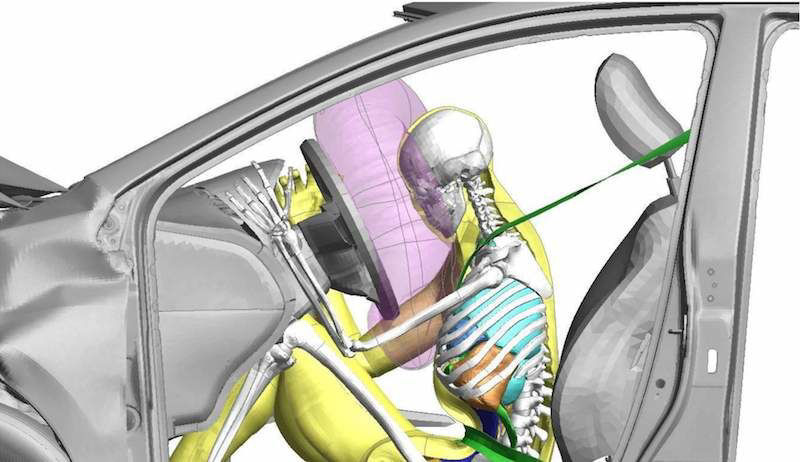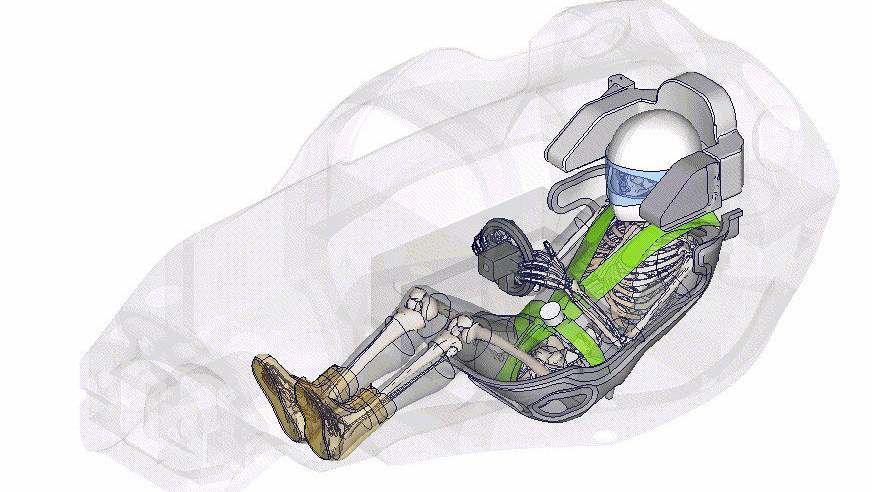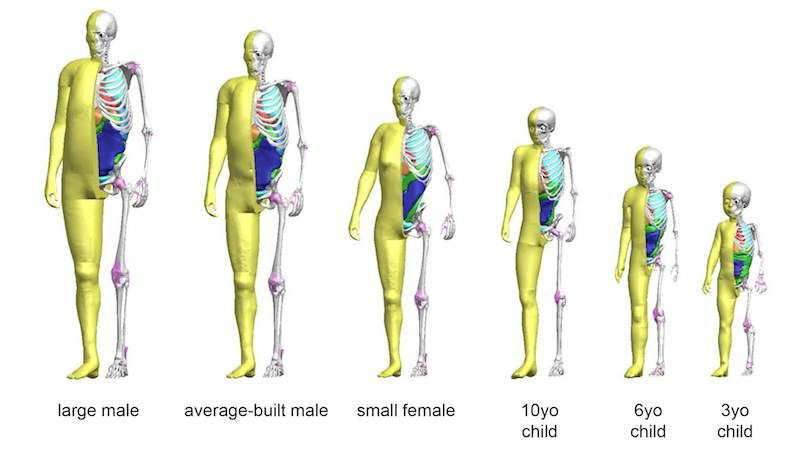Select a province & language
Entrance to this website assumes you have read and agree to these Legal Terms and Conditions and the Privacy Policy.
Entrance to this website assumes you have read and agree to these Legal Terms and Conditions and the Privacy Policy.
The technology used to help make Toyota vehicles safer is now being deployed to enhance driver safety in motorsports.
Toyota Motor Corporation and the Global Institute for Motor Sport Safety have announced a four-year research project that will employ Toyota’s revolutionary Total Human Model for Safety.*

THUMS, as it is most commonly known, is a virtual crash dummy generating data on injuries via a computer simulation and analysis of actual conditions during a crash.
The research will deal with collisions involving closed-circuit race cars and rally cars - all with the goal of enhancing driver protection in a race setting. Possible areas of investigation include seatbelt positioning and seat structure.
The data gathered will be applied to a wider range of vehicle types and drivers and used to expand the capability of the Toyota THUMS system itself.
THUMS takes the concept of a crash dummy to an all-new level.
Development began in 1997 when Toyota engineers looked at their crash dummies and decided they needed a better way to capture detailed information from the ongoing impact tests of their vehicles.

The outcome was a computer model that could represent a human while delivering more information than the traditional dummy.
Although crash dummies are commonly used in vehicle collision tests, they do not allow for easy and detailed analysis of how collisions impact vital and important parts of the human body.
Compared to a crash dummy, the computer-based modeling system simulates skin, bone structure, ligaments, tendons, internal organs, and more. Since THUMS more closely replicates a human occupant, it is able to generate a more accurate image of what happens in an impact with higher quality data.
The virtual THUMS crash occupants are modeled after high-resolution CT scans of the human body, and each computer simulation they are subjected to generates over 100 gigabytes of data.
Since a THUMS crash test doesn’t involve the destruction of an actual vehicle in a crash lab, repeated impact tests are possible at a minimal additional cost.
By switching to a virtual model like THUMS, Toyota safety engineers have more layers of flexibility and analysis with testing. For instance, engineers can run repeated crash test simulations with various virtual THUMS models, anything from an average-sized adult to a large-build male, or a small-build female.

To date, THUMS has improved the overall design of vehicles, from side airbag technology, to seats designed to help lessen whiplash injuries.
THUMS can work outside of the vehicle too as it has helped Toyota designers in creating vehicle front-end structures that are more pedestrian friendly, in the case of a car-to-human collision.
It is all thanks to THUMS advanced technology that Toyota has many models that were awarded with top crash-impact safety scores from industry authorities.
The level of information collected has also expanded. As the system has become more sophisticated over time, a full THUMS family has been deployed, with models that simulate teens, children, pregnant women, senior citizens, etc.
It’s all about gathering as much useful data as possible about more types of occupants in more types of crashes - motorsports or otherwise.
Toyota shares information with researchers around the world, including over 30 organizations in the automotive industry, with the goal of improving vehicle safety.

Though THUMS was initially conceived to make passenger cars safer, several organizations involved in motorsports safety have asked Toyota to apply their leading crash-simulation technology to the world of racing.
For example, it has been used by NASCAR to formulate regulations for seat shapes that are better able to reduce the likelihood of rib fractures sustained by drivers as a result of racing accidents.
THUMS technology has been identified as such a powerful asset for the study of crash safety that motorsport authorities have asked for its assistance in identifying deceleration G-forces and other factors experienced by drivers in a high-speed, closed-circuit setting.
The system’s venture into the world of motorsports gives safety engineers a whole new world of data and analysis to use in creating future vehicles - both mainstream and race-ready.
Many automakers apply lessons learned in motorsports to their mainstream products, and putting motorsports crashes under the THUMS microscope will extend that concept to the world of automotive safety, too.
The Global Institute is the safety research partner of the Federation Internationale de l'Automobile (FIA), the governing body of world motorsports.